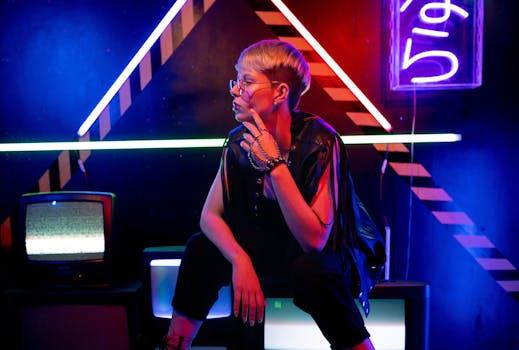Movies
The Rise of Nonlinear Storytelling in Modern Cinema
Nonlinear storytelling is changing how audiences connect with modern cinema. Learn the clever techniques filmmakers use to weave suspenseful, layered narratives that keep you invested and curious from start to finish.
Advertisement
Movie nights look different when the film jumps back and forth in time, forcing viewers to play detective. Nonlinear storytelling, when used well, rewards patience with twists that make the whole ride worthwhile. That unconventional structure hooks audiences who enjoy assembling stories like a puzzle.
People crave experiences they can engage with, and nonlinear storytelling delivers surprises. Instead of following events in a straight line, filmmakers invite the audience to connect moments scattered across time. For some films, these bold story choices define what sets them apart, making them unforgettable in the crowded world of cinema.
This article explores why nonlinear storytelling has become popular in modern filmmaking. We’ll reveal specific creative strategies, examine standout movie examples, and outline how you can spot or use nonlinear techniques yourself. Let’s dive into what makes this narrative style so compelling and how it changes the viewer’s experience—one jump cut at a time.
Strategic Uses of Time-Jumping Narratives for Viewer Engagement
Directors use nonlinear storytelling to keep audiences alert, forcing them to piece together scattered plot threads. By rearranging events, filmmakers shift tension and create surprise in ways a chronological story couldn’t, unlocking different viewer reactions.
This approach challenges viewers’ assumptions about plot resolution and character development. Rather than passively absorbing, the audience has to become a more active participant, picking up clues and forming connections between disjointed scenes.
The Power of Flashbacks and Flash-Forwards to Create Suspense
Filmmakers put the audience in suspense by jumping backward with flashbacks or pushing forward with glimpses of the future. These nonlinear techniques keep viewers guessing what happened—and what will happen next.
For instance, in “Memento,” viewers follow a man with short-term memory loss backward through his own story. This structure heightens suspense, as each new revelation challenges previous assumptions about the hero’s motives.
On the other extreme, a flash-forward might show a dramatic scene early, so the rest of the film builds toward it. This anchors suspense and prompts audiences to track how characters arrive at the teased moment.
Creating Unreliable Narrators Using Disjointed Structure
Nonlinear storytelling can turn the narrator into a character whose version of events is unclear. By shuffling scenes, the director reveals information selectively, causing the audience to doubt what’s true.
Examples include “The Usual Suspects,” where key details are withheld until the final act. The unreliability stems from the nonlinear structure, pushing viewers to question every piece of the puzzle.
Viewers learn to scrutinize every flashback and perspective. By deliberately leading the audience astray, the narrative rewards close attention with satisfying “aha” moments when the truth comes to light.
| Film Title | Structure Type | Key Technique | What to Notice |
|---|---|---|---|
| Pulp Fiction | Nonlinear | Interwoven scenes | Pay attention to overlapping storylines |
| Memento | Inverted chron | Reverse timeline | Track scene color for sequencing |
| 21 Grams | Fragmented | Character-focused jumps | Note emotional shifts tied to timeline |
| Eternal Sunshine | Nonlinear | Memory dives | Watch for dreamlike transitions |
| The Usual Suspects | Unreliable narration | Shifting perspectives | Look for details that later change meaning |
Specific Techniques Filmmakers Use to Tell Nonlinear Stories
Directors organize nonlinear storytelling through clever transitions and structured chaos, keeping the story both engaging and understandable. With deliberate patterns, they create a narrative rhythm viewers can follow while still delivering unique or unexpected moments.
Scriptwriters use visual or audio cues to signal time shifts, making sure the audience never feels lost. Techniques like color changes, sound bridges, or repeated motifs cue viewers into the story’s shifting timeline.
Visual Cues for Seamless Nonlinear Transitions
Color filters, costume changes, and lighting changes all help mark different timelines. For example, in “Memento,” black-and-white versus color scenes clearly separate past and present, giving attentive viewers a map to follow the plot’s many jumps.
Quick cuts paired with character-focused close-ups also anchor the viewer in time. When a protagonist reacts differently across scenes, it signals a different moment or memory, clarifying the narrative flow within the nonlinear storytelling method.
- Use lighting shifts to mark dream sequences, distinguishing fantasy from reality and helping viewers notice when time slips.
- Change costumes to represent years passing, instantly indicating time jumps without a title card.
- Apply distinct color grading to indicate flashbacks, creating consistency across non-chronological sequences.
- Execute scene transitions with matching movements, like a door opening into another era, for seamless nonlinear storytelling flow.
- Rely on repeating objects to bridge different timelines, urging viewers to connect recurring motifs for deeper meaning.
To liven up a sequence, a filmmaker might echo an earlier visual, linking story threads across time without explicit exposition. This motivates viewers to sift through visual clues for hidden narrative details.
Audio as a Marker for Narrative Shifts
Directors use recurring audio, like unique music cues or a looping sound effect, to connect scenes from different times. For instance, a lullaby heard in a flashback reappearing later helps tie past events to present consequences.
Characters might repeat a phrase, acting as a memory trigger both for themselves and the audience. When a line resounds across timelines, it signals an important story link in nonlinear storytelling, reinforcing the fractured narrative with clear continuity.
- Insert signature songs that replay in different scenes to connect memories, crafting emotional throughlines in the storyline.
- Let recurring environmental sounds—like rain or distant sirens—subtly cue viewers to match past and present.
- Use dialogue echoes across scenes, reinforcing key themes or bridging gaps between nonlinear events.
- Weave in voiceover narration to align different character perspectives, keeping the audience grounded even when time jumps.
- Bring back sound motifs, like a ticking clock, that heighten tension as viewers realize events overlap in nonlinear storytelling.
Sound design becomes a guiding thread. By paying close attention to audio cues, viewers can follow temporal leaps and connect evolving plotlines, especially in challenging nonlinear films.
Realistic Film Scenarios That Showcase Nonlinear Storytelling
Seeing nonlinear storytelling in action makes its benefits clear. Famous examples demonstrate how this structure deepens emotion and complexity. In “Pulp Fiction,” scenes play out of order, but each segment intensifies the overall narrative, making the audience re-evaluate previous assumptions.
Some films rely on nonlinear techniques to deepen characterization. In “Eternal Sunshine of the Spotless Mind,” memories appear in fragments, mimicking the protagonist’s mind. By experiencing this disjointed view, viewers empathize more strongly with the character’s confusion and growth.
Applying Nonlinear Methods in Modern Movie Scripts
When writing a script, using nonlinear storytelling can add layers to your narrative. A writer could break the timeline, showing the consequence first, then slowly revealing the cause, leading to a more engaged audience.
For example, script notes might read, “Scene 3, cut to five years earlier—character’s motivation revealed.” Layering backstory through these jumps offers fresh insight without tedious exposition. Nonlinear storytelling becomes a tool for both writers and directors to create richer, more dynamic films.
Directors should always test timelines in the editing room. Previewing with test audiences can show whether jumps feel intuitive or confusing. If viewers spot connections you didn’t intend, use that feedback to refine your nonlinear approach, making the film both clever and clear.
Audience Experience and Emotional Response
Audiences exposed to nonlinear storytelling respond with more intense curiosity and anticipation. When scenes are out of order, people naturally start connecting the dots, asking, “How did this moment occur?” That involvement builds emotional investment.
Clever narrative leaps also sustain tension throughout the story, instead of peaking early or fading midway. When executed well, nonlinear films leave viewers reflecting on the story long after the credits roll—a testament to their impact and staying power.
Careful planning keeps this style effective. Editors work with directors to make time-bending stories clear but still surprising, so the audience feels rewarded by their effort when the final piece falls into place.
Storytelling Choices That Influence Film Genre and Mood
Nonlinear storytelling can radically alter how a film’s genre is perceived. Mixing timelines might add a layer of complexity to a straightforward thriller, or introduce whimsy to a romance by reshuffling notable moments.
Directors select nonlinear approaches to support specific moods. An action film using flash-forwards can sustain anxiety, while a drama looping around one pivotal moment invites viewers to interpret character decisions differently each time.
Nonlinear Structure in Mystery and Thriller Narratives
In thrillers, showing a crime before explaining its backstory builds suspense naturally. “Why did this happen?” becomes the driving force, pushing viewers to scrutinize every nonlinear flashback for clues.
The result is a more active audience, primed to catch visual hints. Nonlinear storytelling in this genre rewards careful attention to timeline details, turning viewers into detectives who participate in untangling the plot’s mystery.
Try this technique in your script: show the aftermath of an event in the opening, only to circle back and fill in those events out of order, deepening suspense along the way.
Reshuffling Romance and Character-Driven Stories
Romances become more poignant through nonlinear storytelling by highlighting the impact of fate or missed chances. “Eternal Sunshine of the Spotless Mind” leverages this by revealing heartbreak and happiness in fragmented order, deepening emotional resonance.
Writers use memory-based timelines to mirror real relationships, which rarely unfold neatly. Contrasting positive and negative moments, out of order, invites audiences to reflect on how every choice shapes love stories.
This structure provides fresh perspective: “Our best memory is also our saddest.” By blending timeframes, nonlinear storytelling in romance offers a realistic and satisfying way to view love’s complexity.
Why Nonlinear Storytelling Keeps Growing Among Filmmakers
Filmmakers gravitate toward nonlinear storytelling to break free from formulaic narratives and create new ways to surprise viewers. Successful nonlinear films catch attention and invite critical analysis, which helps them stand out in a competitive industry.
Streaming platforms and digital editing have made experimenting with nonlinear structures more accessible. Viewers, now comfortable rewinding or rewatching scenes, are more open to layered timelines that reward active engagement and repeated viewing.
Peer Discussions: What Filmmakers Say About Nonlinear Trends
“I wanted the audience to work for it,” a director might remark about reordering scenes. Colleagues share that nonlinear storytelling makes movies a shared puzzle, driving conversations online long after release.
Film schools now encourage experimentation. In workshops, students are challenged to write scripts out of order, learning firsthand how nonlinear storytelling can either confuse or captivate depending on clarity and intent.
During panel discussions, editors note that nonlinearity adds replay value. “Every time, someone will notice something new,” one veteran editor explains. That lasting appeal turns nonlinear films into cult favorites, revisited for secret clues and new interpretations.
Industry Checklist for Planning a Nonlinear Film
Planning nonlinear storytelling requires intentional design. Teams start with a clear map of timelines, highlighting where scenes overlap or reference earlier events, to avoid audience confusion.
During production, keeping detailed notes ensures each actor knows which version of their character they’re playing in every scene. This careful documentation is crucial for delivering consistent performances and smooth editing later.
Editing involves extra rounds of feedback, inviting fresh eyes to catch hidden connections or plot holes. Test audiences provide reactions like, “I didn’t get lost here,” signaling the nonlinear plan is working while still surprising the viewer with each twist.
Summary Insights and Takeaways for Future Movie Watching
Exploring nonlinear storytelling reveals why its power resonates with both filmmakers and audiences. When executed thoughtfully, shuffled timelines can intensify suspense, deepen empathy, and turn viewers into curious participants eager for resolution.
This structure encourages people to watch more attentively, noticing details and patterns that would otherwise go overlooked. For movie lovers, learning to spot nonlinear techniques brings a new layer of enjoyment and insight to every viewing experience.
The next time you settle in for a movie, look for the signs of nonlinear storytelling. Try piecing together the timeline as you watch—the story’s puzzle pieces might reveal themselves in a whole new light.
You may also like

The Role of Color Palettes in Visual Storytelling: Cinematic Techniques in Focus
Explore color palettes in film that shape mood, express emotion, and create powerful visual signatures that endure.
Keep Reading



